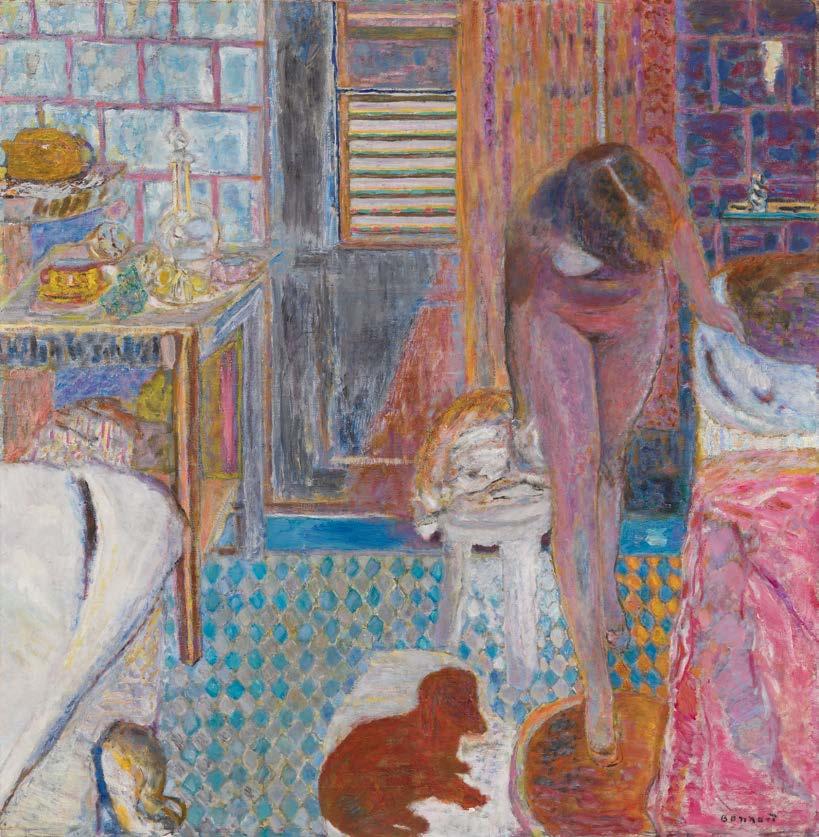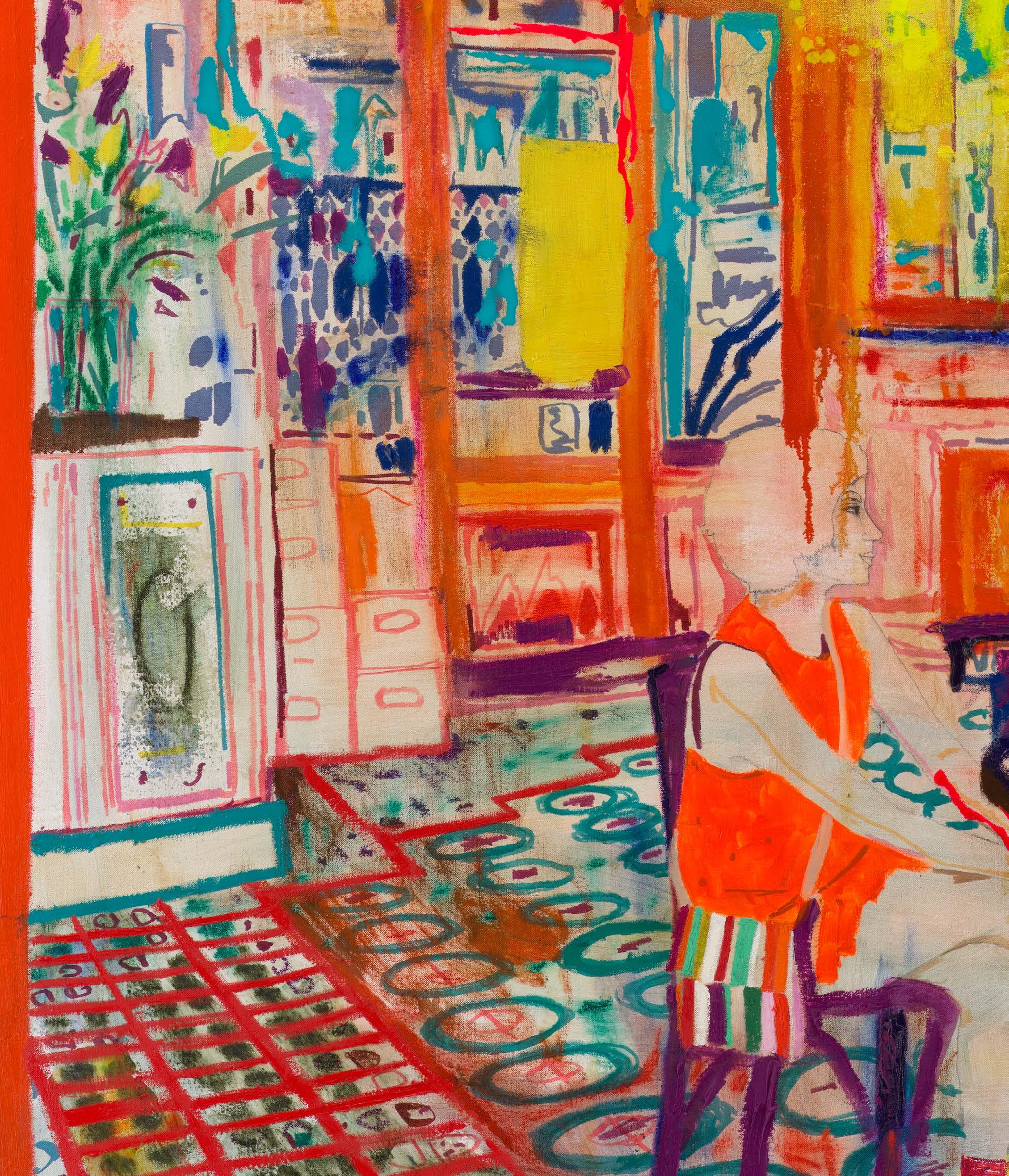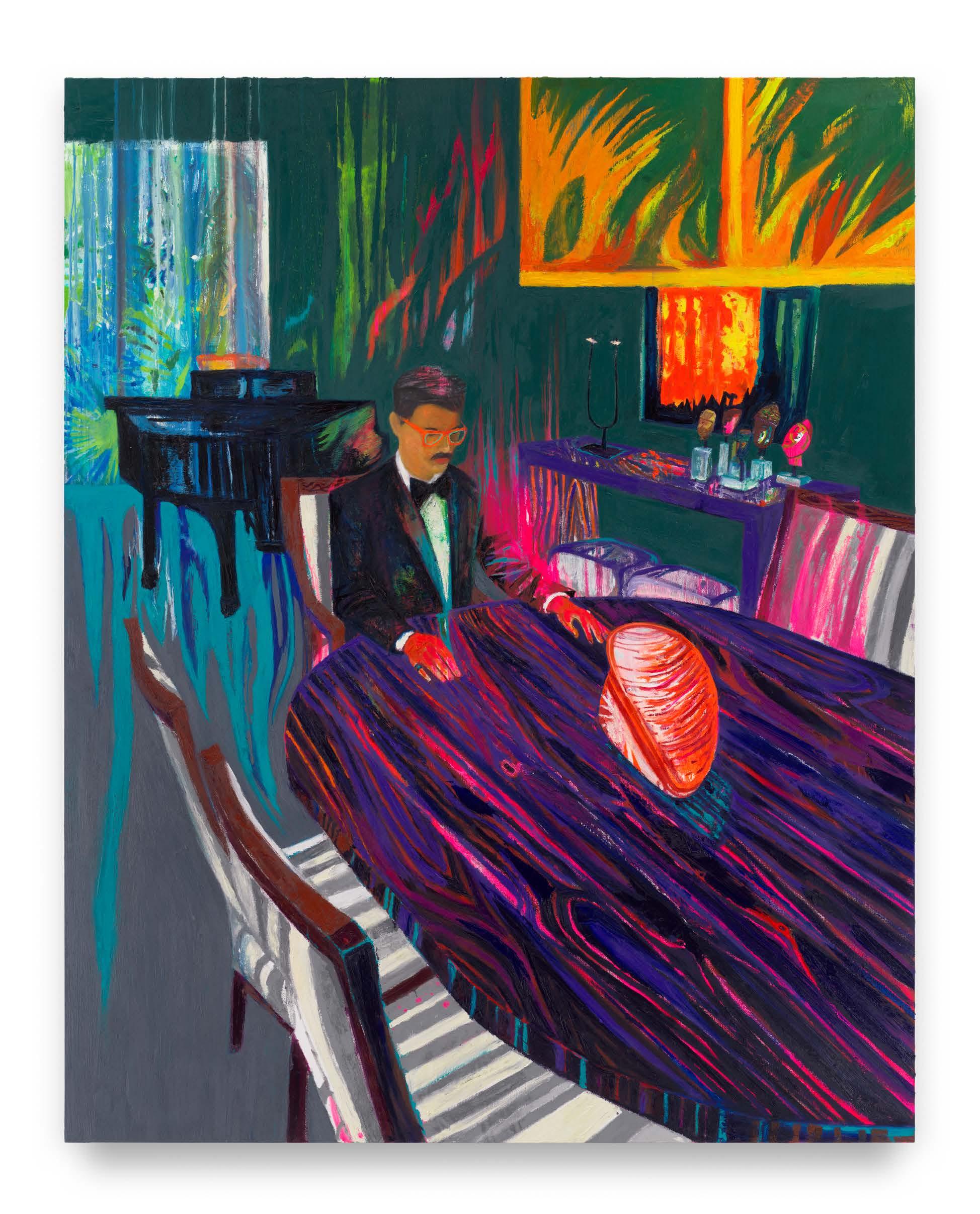RAFFI KALENDERIAN









In a compulsively rendered tapestry of contemporary culture, which is also deeply nestled in the past, the Los Angeles-based painter Raffi Kalenderian interweaves romance, punk music, poetry, mystery, melancholy, portraiture, performance, and action. As well as strands of autobiography.
His painted patterns suck you in; he renders darkness cheerful; and he enlivens stillness. One might say the subjects of his portraits are actually the contexts themselves—the clothes, the wallpaper patterns, the scuffed floorboards, the sounds, song lyrics, the renderings of vibrations. Drawing inspiration from art history as a backdrop, including scenes like the darkly seductive one in Félix Vallotton’s film noirish painting The Visit (1899) as well as van Gogh’s garishly lit The Night Café (1988) together with his own, Goth-style portraits from life, such as that of the seductive singer-performer Geneva Jacuzzi, known for her synthetic pop renditions, and the music of the Irish post-punk band Fontaines D.C., Raffi Kalenderian invites passion and free-association.
He cites the poignancy of a song “The Couple Across The Way,” sung by The Fontaines D.C. It became the title of a group of his paintings, including his own, updated, version of The Visit (After Vallotton) (2022), featuring two women, whom he befriended in a bar, dancing together in lieu of Vallotton’s bourgeois couple. “While I was making this painting, I became obsessed with this song,” he said. Following the lyrics, the couple mulls over the lives of the young pair who moved into the apartment across from their own and consider how their lives have changed over the years. They argue and reconcile and resign themselves to a sort of love, perhaps. “That seemed like what I love about music, art, movies, jokes, whatever the thing is. I love when something hits this discord, like throwing a wrench in a piano.”
In that way, Raffi Kalenderian can wrap the nineteenth and twentieth centuries neatly into the twenty-first. Once we begin engaging with his paintings, we find ourselves
incidentally connecting them with so much else around us, visual and verbal, such as a 1925 portrait by Charles Sim in the Sassoon show at the Jewish Museum, showing the socialite Sybil Sassoon seated alone and staring out into an empty ballroom with shimmering walls and an atmosphere of unease—almost like a prequel to some of Kalenderian’s figures poised almost frozen amid a dense sea of colorful vegetation.
Raffi Kalenderian freely acknowledges his many inspirations, not least, as he told Studio International, Lari Pittman and the painter Laura Owens, with whom he studied at UCLA and who introduced him to the work of Alice Neel and David Hockney. He also admits to drawing from Mexican wall hangings and American folk-art quilts. Most clearly, Pierre Bonnard and Édouard Vuillard have their say in the warmth of domestic activity and in the density of details in the paintings, but then, so do Vincent van Gogh and Edvard Munch in the vividness of the colors, in the compositions with their perspectival tricks that lead us in to the heart of the paintings and into apertures beyond, and in the brilliant lighting. It is a perspective that Kalenderian creates in his Julian (2023), an enigmatic portrait fraught with a lively near-surreal dissonance. Van Gogh’s lurid greens set the mood in such settings as his Night Café (1888) and

Bedroom at Arles (1888). And Munch, in his Self-Portrait: Between the Clock and the Bed (1940 – 1943) is immersed in his busy domestic setting.

Following, and adding to, Raffi Kalenderian’s associations is addictive, as his audience moves through a rich vein of contemporary culture, from the poetry of Adrienne Rich, such as her “For the Dead,” which Kalenderian says, “inspired me, and how I rationalized using that beautiful poem for my not nearly as important painting show,” through to the work of his friend Lars Finberg, the drummer in the garage-punk band that Kalenderian was in called Wounded Lion, and then back to Lewis Carroll’s famous poem “Jabberwocky” (1871).
Synesthesia prevails throughout his work. The vibrations generated by color and gesture evoke a sense of motion, almost literally showing music. The jagged lines and shifting patterns of technologic static activate the paintings as in the image of Alberto and Chici (The Uptown) (2023), featuring a psychedelic green ghost figure beneath
a brushy impressionistic performer at play at a pinball machine, with Alberto in the booth and a dog at his feet.
In the meantime, there is an insistent sense of melancholy among the figures themselves, whether it is drug-induced or simple malaise, we don’t know, but at the same time, many of the characters also seem to be having fun and Kalenderian has maintained that his paintings are intended to show his love for his subjects.
In these most modern of recent works, Kalenderian’s performers can be viewed as audiences themselves, sitting silently and expectantly, even confusedly, amid a sea of electricity, which, through feats of painterly magic, seems literal. “Part of what was important to me about making the Geneva Jacuzzi (Spaceland) (2023) painting, for example,” which he wrote to me “was trying to capture this moment between audience and performer, how it can be this perfect connection.” He tells how, after an Iggy Pop performance he asked his girlfriend’s brother, Paul, whether he knew any poems or

songs that were about the relationship between audience and performer. Paul told him that every day he listens to this song by Bauhaus called “Spirit.”
Kalenderian said, that Paul “is in a post punk band Las Flores, and I had wanted to paint him smoking a cigarette in an empty venue after playing a show, his reflection below in the woodgrain. As I was making this show I began to see this thread of performers, pre-performance, post-performance, during the act of performing [. .] and all of these small, mundane moments where creative ideas emerge.”
There is a stark contrast throughout between stasis and activity. Raffi’s portrait subjects—his friends, creative, and other, of all stripes: old and new, punk and professional, family and lover—tend to sit somewhat rigidly amid a dynamic backdrop of color and pattern. We may wonder if the characters depicted relate to the conversation among all the other elements of the paintings. They seem so reserved, as if they were a part of Kalenderian’s audience, responding with dumbfounded fascination to the energy and unity of subject and content that drives his art.

“I love working on a million things at once, I never know where exactly a work is going or where it will take me,” he wrote, “so I like to just dip a little here, a little there, see what starts to take shape. As I was working on this batch, I noticed that there was a thread emerging, that the show seemed to be about people who were about to perform, or maybe post-performance, and in one painting, mid-performance with an audience.”
“During the pandemic I had to improvise in terms of making portraits,” he wrote. “So I would ask friends to send me images of them sitting on a couch, or reading, and I would take the image and collage it into something I had in some other folder in my phone.” This might in part account for the wildness of Raffi Kalenderian’s thinking, its dynamism, and how he surprises himself. One might think amid the cacophony of that treacherous and disorienting period of time, about life in the looking-glass world of Lewis Carroll’s famous poem “Jabberwocky.” We can also see the artist working it out spontaneously in the journals he kept while traveling through France in the summer of 2022 as he shifted from picture to pattern.










Colored pencil, oil, pastel, ink, graphite and cold wax on linen
98 x 70 inches
248.9 x 177.8 cm


















Published on the occasion of the exhibition
THE CURTAIN RAISE THE ROOF SPIRITS ON TONIGHT
8 June – 22 July 2023
Miles McEnery Gallery
515 West 22nd Street New York NY 10011
tel +1 212 445 0051 www.milesmcenery.com
Publication © 2023 Miles McEnery Gallery
All rights reserved
Essay © 2023 Barbara MacAdam
Director of Exhibitions
Anastasija Jevtovic, New York, NY
Publications and Archival Assistant
Julia Schlank, New York, NY
Photography by Evan Bedford, Los Angeles, CA
Fredrik Nilsen, Los Angeles, CA
Color separations by Echelon, Los Angeles, CA
Catalogue layout by McCall Associates, New York, NY
ISBN: 978-0-9850184-8-1
Cover: Leslie and Sharkey (detail), 2023
Endsheets: Geneva Jacuzzi (Spaceland) (detail), 2023



